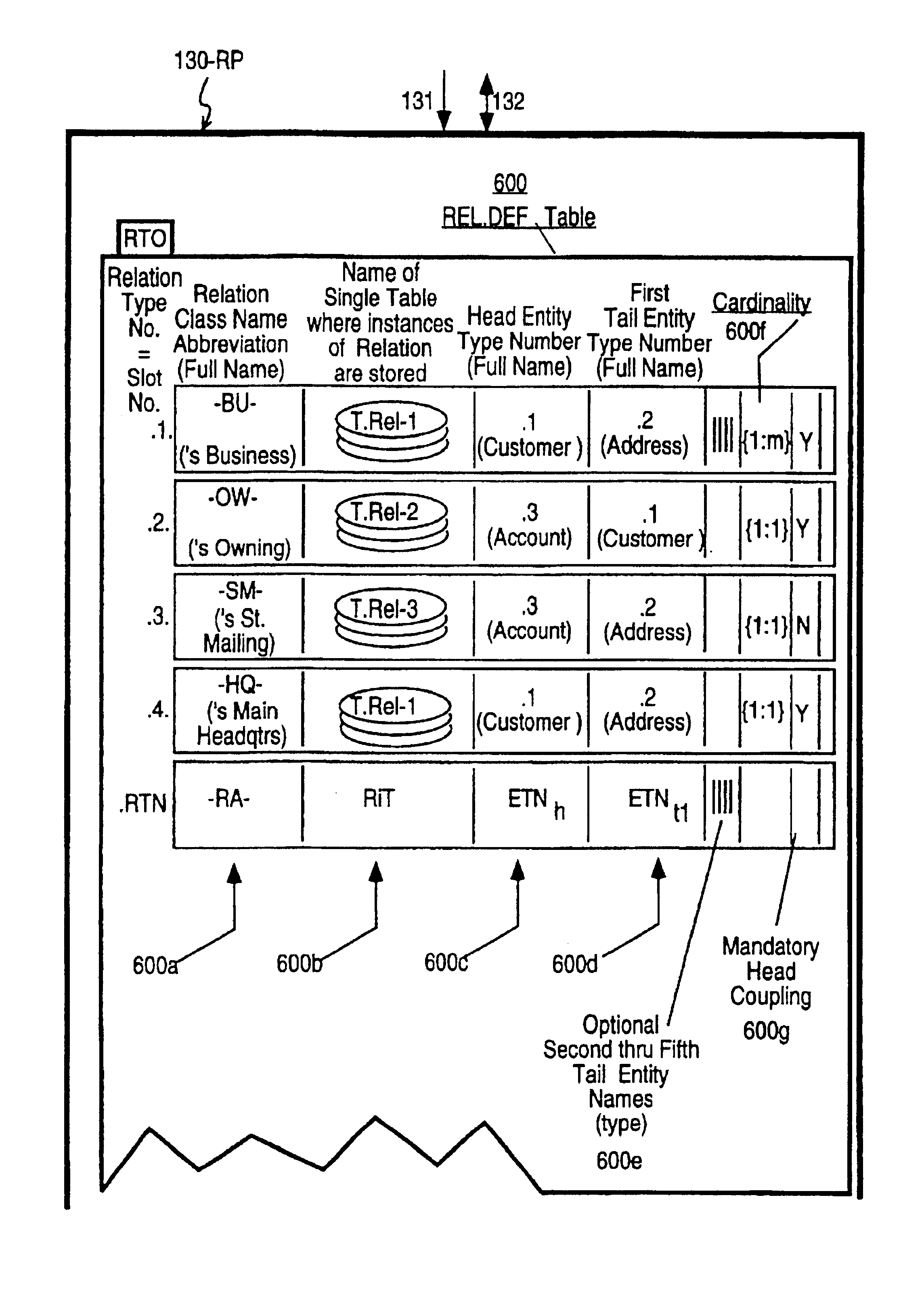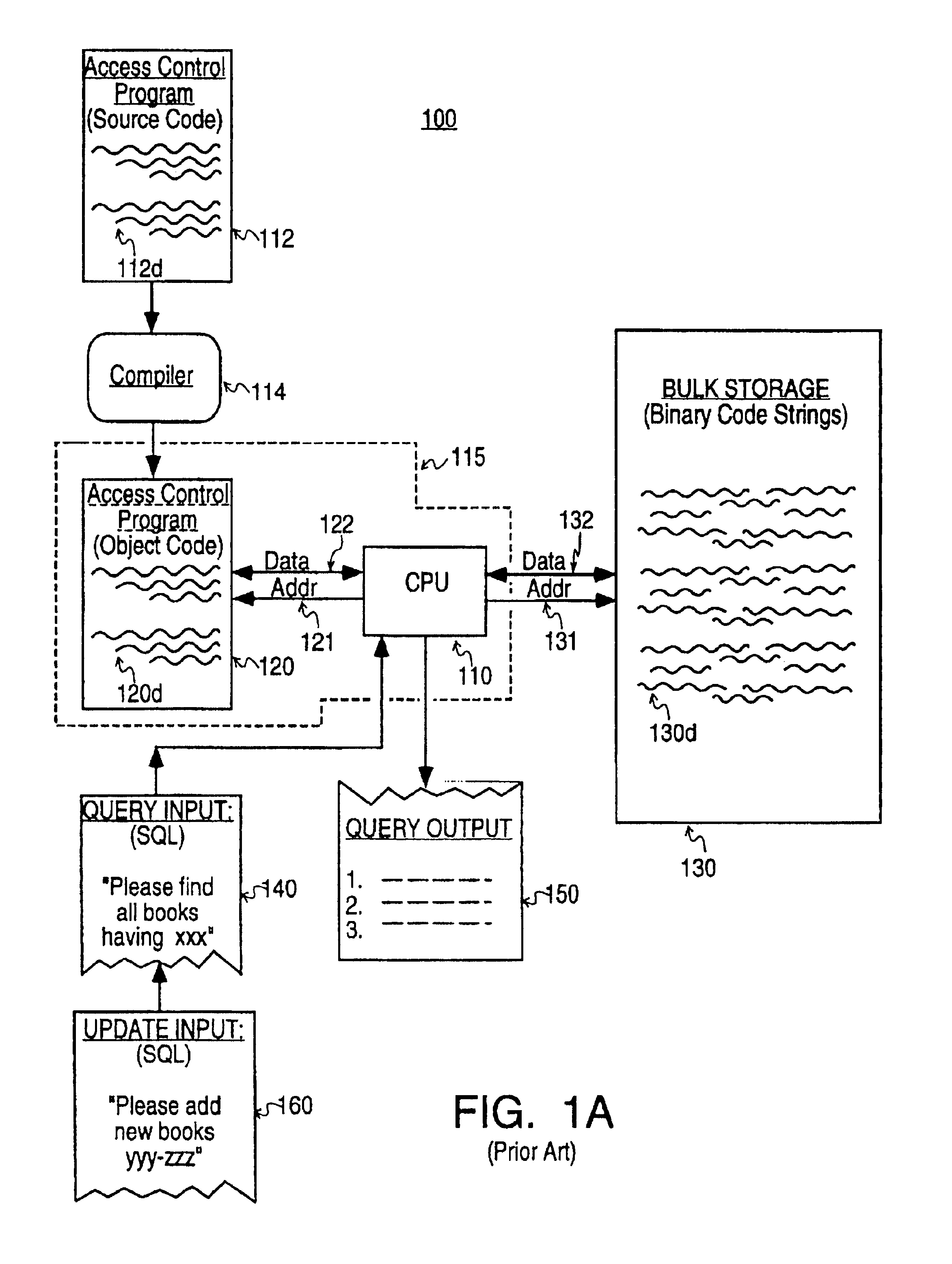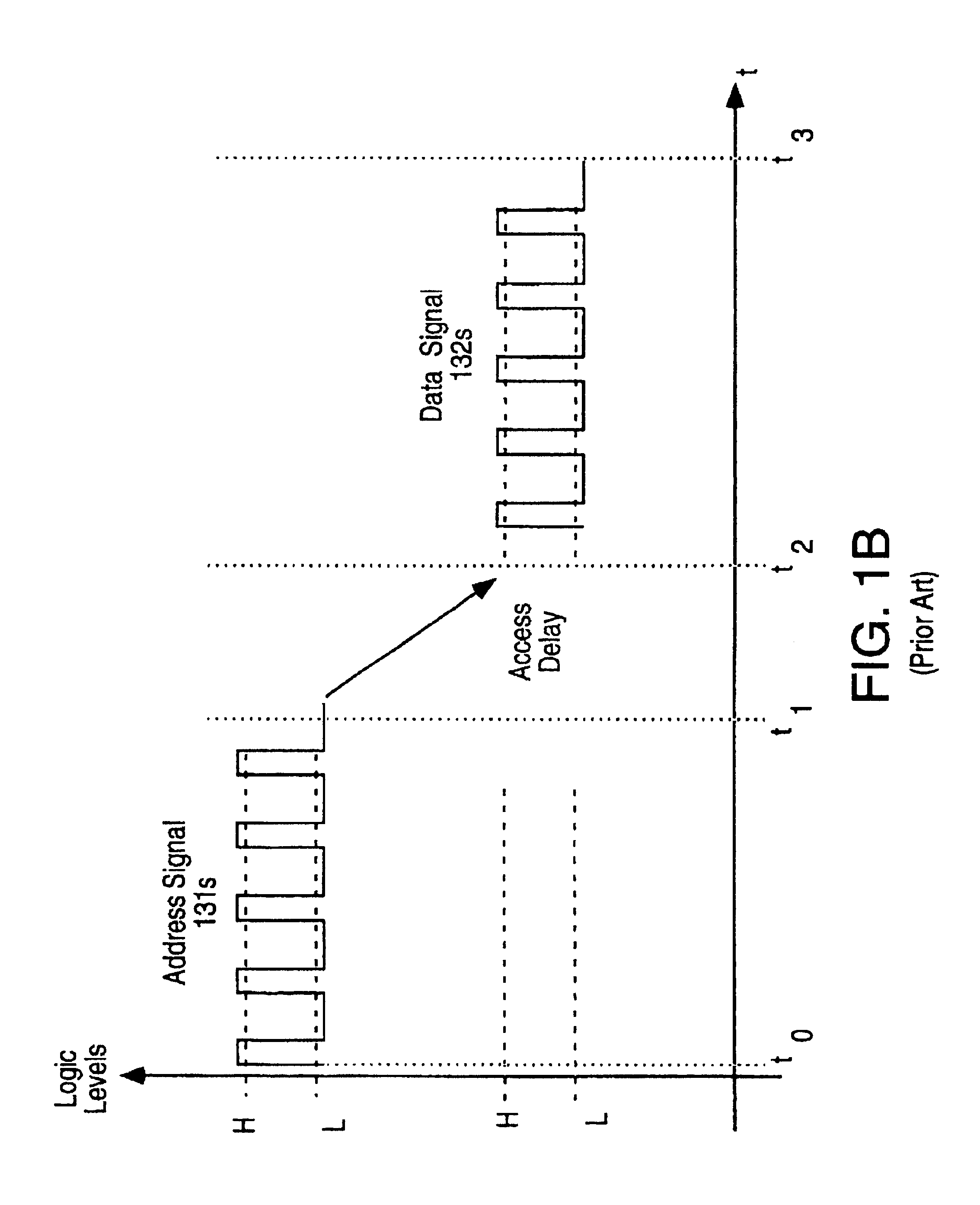Data processing system and method for detecting mandatory relations violation in a relational database
a data processing system and database technology, applied in relational databases, instruments, transportation and packaging, etc., can solve the problems of requiring a substantial amount of time for requiring thousands of seconds (many hours) to retrieve a desired piece of information, and wasting time on the search and retrieval process, etc., to achieve easy expansion or restructuration, high speed
- Summary
- Abstract
- Description
- Claims
- Application Information
AI Technical Summary
Benefits of technology
Problems solved by technology
Method used
Image
Examples
embodiment 200
[0059]The implied relations between the “real” data boxes, 231, 233 and 235 of Record No. 1, arise only after “meaning” is assigned to all the boxes 231-236. Such “meaning” comes from the operation of the search-and-translation machine 115 (FIG. 1). To understand this concept, assume that an automated “searching” machine (computer) 115 / 200 of embodiment 200 is examining the data string 230 held within the single Record No. 1. Assume further that this searching machine 115 / 200 includes means for assigning appropriate “meanings” to each of the data subportions contained in each of subsections 231-236 to thereby designate some as containing “real” data and others as containing “ancillary” (e.g., pointer) data. In that case the search machine 115 / 200 can scan horizontally across the record, parse the data string 230 into subsections of appropriate size and extract the name of the book's author, the book's title and the location of the book within the library, as desired. On the other ha...
embodiment 300
[0077]Each row (e.g., row 4) within the third table 330 implicitly creates a set of logical links or “relations”, L41-P42-L43, which join a person's name to a particular home address. These links, L41, P42 and L43 are represented in FIG. 3 by dashed connecting lines which, in combination, join the Person's-Name held in table 310, row N, to the Home-Address held in table 320, row 2. The implied linkage, L41-P42-L43, does not arise from the contents of the first three tables, 310, 320 and 330 taken alone. The key numbers (e.g., N-IDN, H-IDN, P-IDN) that are held within these tables are by themselves a meaningless series of numbers. It is only when randomly distributed modules of object code 120d* stored within the memory means 120 of this “relational database” system (300) cooperatively interact with the CPU 110 that the implied relations come into being. The object code 120d* instructs the CPU 110 to select a specific row (i.e., row 4) in the third table 330, to extract the numbers f...
PUM
 Login to View More
Login to View More Abstract
Description
Claims
Application Information
 Login to View More
Login to View More - R&D
- Intellectual Property
- Life Sciences
- Materials
- Tech Scout
- Unparalleled Data Quality
- Higher Quality Content
- 60% Fewer Hallucinations
Browse by: Latest US Patents, China's latest patents, Technical Efficacy Thesaurus, Application Domain, Technology Topic, Popular Technical Reports.
© 2025 PatSnap. All rights reserved.Legal|Privacy policy|Modern Slavery Act Transparency Statement|Sitemap|About US| Contact US: help@patsnap.com



